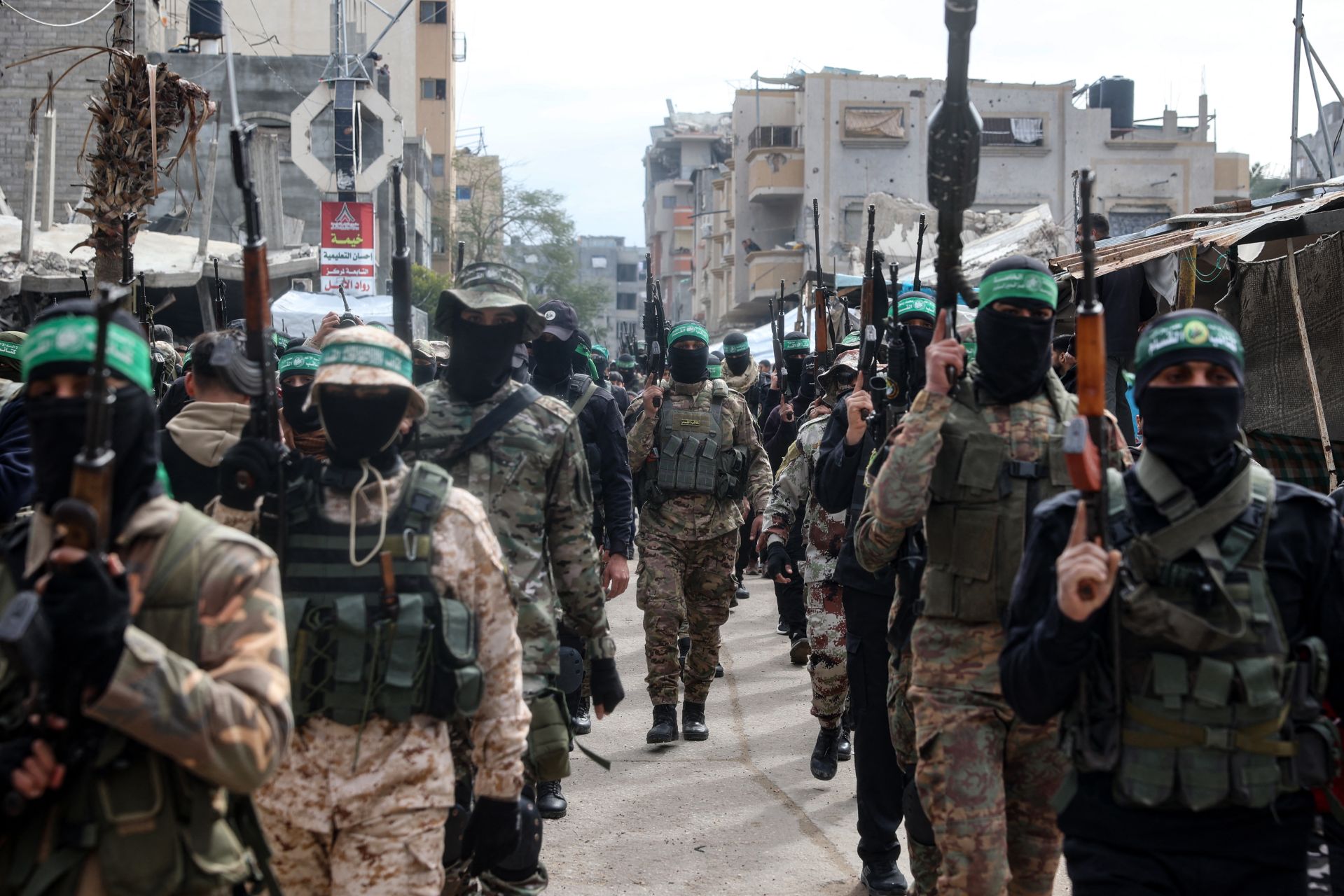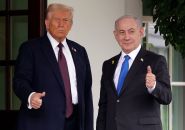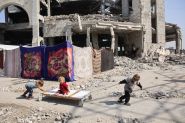- Home
- Middle East
- Gaza in the Grip of Hamas’s Reign of Terror

Palestinian fighters from the Ezzedine al-Qassam Brigades, the armed wing of Hamas. ©Eyad Baba / AFP
Since the October ceasefire between Israel and Hamas, a new conflict has erupted in the Gaza Strip: an internal struggle as the Islamist movement targets its Palestinian rivals. The campaign has involved executions, raids, and armed clashes across multiple neighborhoods.
Officially, Hamas says it is “restoring order” after two years of war and chaos. In reality, the crackdown reflects its determination to reassert full control over the territory ahead of the anticipated deployment of an international stabilization force.
The Enemy Within
In Gaza, Hamas’s adversaries are no longer limited to Israel; they now include the clans, militias, and networks that emerged during the war. According to Foreign Affairs, in the days following the ceasefire, “Hamas launched a campaign of violent reprisals against rival groups to reassert its control over areas vacated by Israel.”
A video released on October 13 and verified by the Israeli outlet Haaretz shows Hamas fighters publicly executing several men in the Sabra neighborhood of Gaza City. Officially, the men were accused of “collaboration” or looting humanitarian aid. For many residents, the executions were both punishment and warning, as Hamas seeks to demonstrate that it remains the sole authority in the Strip.
At the core of this violence lies a fierce power struggle. The influential Doghmosh clan in Sabra has repeatedly defied Hamas’s authority. Its armed wing, the Army of Islam, once linked to Al-Qaeda, remains a symbol of local independence. Other families, including the Hellis in Shujaiya and the Al-Majayda in Khan Younis, have also clashed with Hamas security forces. Eyewitness accounts collected by Haaretz describe street battles, raids, and looting of aid, while some civilians, frustrated by the chaos, have tacitly tolerated - or even silently supported - the executions.
The Response to Israeli-Backed Militias
Beyond the clans, Hamas is primarily targeting armed militias that have emerged under Israeli protection or with its support. The Long War Journal reported that in the spring, the Israeli government launched a campaign to “arm rival groups” inside Gaza. Among them, the Popular Forces, led by Bedouin commander Yasser Abou Shabab and numbering 500 to 700 fighters, received funding and logistical backing from Tel Aviv.
Smaller groups, including Houssam al-Astal’s Anti-Terror Strike Force in Khan Younis and Ashraf al-Mansi’s Northern Armed Forces in Beit Hanoun, have also been accused of directly cooperating with Israeli intelligence. Composed of former Palestinian Authority police, traffickers and deserters, these militias claim to protect civilians and secure aid convoys. In reality, the Stimson Center observes, they “benefit from Israeli support and contribute to the fragmentation of the Palestinian landscape.” For Hamas, these groups are viewed as instruments of foreign interference, aimed at paving the way for a post-Islamist political alternative.
A Survival Strategy
Since October 10, Hamas has intensified “cleansing” operations in Rafah, Khan Younis and Gaza City. Internal security units, known as Sahm, along with the newly formed Radeh force, conduct night raids, confiscate weapons, and execute suspected members of Israeli-backed Palestinian militias. Haaretz reports that even Israeli soldiers observing from nearby posts were ordered not to intervene, in line with the ambiguous terms of the ceasefire.
The campaign also carries symbolic weight: demonstrating Hamas’s ability to enforce law and order in areas vacated by Israel. According to the European Council on Foreign Relations (ECFR), the movement seeks to “disarm clans and eliminate Israeli-backed militias” ahead of the anticipated deployment of an Arab or international stabilization force outlined in Donald Trump’s plan. Pragmatic leaders such as Khalil al-Hayya and Bassem Naim have accepted the ceasefire and the formation of a Palestinian administrative committee, but reject any immediate military sidelining. Hamas seeks to appear indispensable, even at the cost of violent internal purges.
At its core, the issue is existential. As Foreign Affairs notes, “Hamas’s weapons are its path to retaining power.” Surrendering them would mean betraying itself. The group fears Hezbollah’s fate in Lebanon: a military force constrained by a powerless government and a collapsed economy. This urgency explains why Hamas is asserting its strength now, before negotiations over an international force take shape.
Stability Still Out of Reach
Hamas’s crackdown exposes the deep fragility of Gaza’s situation. The proliferation of militias, external support for some, and Hamas’s own brutality threaten to turn the ceasefire into little more than a temporary pause.
As the Stimson Center observes, “these internal struggles undermine the prospects for a viable international force and delay reconstruction.”
While Washington and its Arab partners push to deploy a stabilization force, Hamas is striving to demonstrate that it can independently govern. Yet each execution and raid feeds a cycle of vengeance and instability. Paradoxically, the Islamist movement’s “campaign for order” against its rivals may accelerate the very chaos it claims to prevent.
Read more




Comments